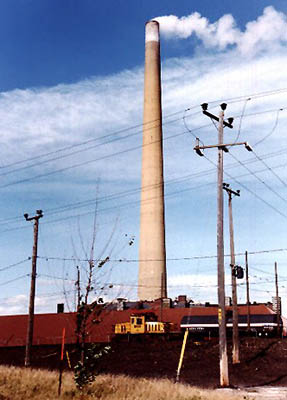A few facts about Nickel
posted on
Feb 13, 2008 07:21AM

NI 43-101 Update (September 2012): 11.1 Mt @ 1.68% Ni, 0.87% Cu, 0.89 gpt Pt and 3.09 gpt Pd and 0.18 gpt Au (Proven & Probable Reserves) / 8.9 Mt @ 1.10% Ni, 1.14% Cu, 1.16 gpt Pt and 3.49 gpt Pd and 0.30 gpt Au (Inferred Resource)

I will not be accused of not doing any DD or contributing to the board so from now on you will only get hard facts from me.
This is for the geology types.
Nickel
The metal Ni and to a lesser extent, Co, Zn and Mn all substitute for Mg or Fe in olivine, one of the very first minerals to form in most basalts. Cr also shows much the same behaviour. Under surface conditions Ni preferentially enters olivine to the degree that, (taking an example from the 1959-60 Kilauea Iki picritic eruption, (Gunn, 1971, Chem.Geol. 8, 1-13)), in a melt with about 225 ppm Ni and 7.5% MgO an olivine of Fo85 - Fo88 may have 2500 - 3000 ppm olivine. In other words the partition coefficient is high, perhaps about 13 compared to about 7.5 for MgO. That is, thirteen times as much Ni goes into the olivine as remains in the basalt liquid. A table for partition coefficients for these metals is being prepared.
Olivine depletes the nickel in a rock so rapidly that below about 3% MgO there may only be 10-20 ppm remaining. The only reason this is not sopped up as well is because olivine has ceased forming and some Ni goes into Ti.magnetite.
In spite of a great deal of data on Ni, the amount of good data concerning the amount of Ni in various grades of olivine is limited to absent except at a low level of accuracy, but laser-ablation techniques should change this.
| Mg vs Ni in Olivine, Sete Cidades, Sao Miguel, in the Azores. |
Origins and Production of Ni
 At 1,250ft (380m) the Inco chimney in Sudbury, Ontario is one of the tallest in the world. Its height means that pollution is no longer a local problem. |
By far the greater part of the Ni in the Earth's crust occurs in the magnesian silicate olivine where it replaces Mg to the extent of 2000 - 4000 ppm. While this only a few tenths of a percent, olivine is a very common mineral in basic rocks. The Ni content is much higher in the more magnesian olivines, ranging from about 3500 ppm at Fo90 down to about 1500 ppm at Fo65. Renner et al (1993,J.Pet.35,361-400) show a much steeper distribution of Ni in olivines of Archaean Komatiites but it is impossible to reconcile their diagram with their data, and we must await new laser ablation ICPMS data.
Laterites developed by tropical weathering on the surface of old alpine-type peridotites have retained Ni, often in the mineral garnierite as in New Caledonia, in east Australia and I believe, in the new Murrin Murrin field in WA. Exact figures are not available but laterite sources accounts for only about 15 - 20 % of total nickel production.
By far the greater amount is recovered from disseminated sulfides in massive basic intrusions, where is occurs as pentlandite, (Ni,Fe)9,S8), or as niccolite (NiAs) or millerite (NiS). By far the best known occurrence is at the Sudbury Intrusion in Ontario Canada, headquarters of the well-known conglomerate INCO. In 1995 INCO is said to have produced 143,000 tons Ni, 116,000 t Cu, as well as PGE (Platinum group elements.). Another large Sudbury mine, Falconbridge, produced 34,000 tons Ni, 42,700 t Cu and 540 t Co. For these figures we are indebted to Laurentian University members. The Thompson Mine in northern Mantitoba is supposed to have produced even more, and the large Muskox Intrusion near Coppermine, NT is being developed by INCO.
(see further detail on Sudbury under "Continental Flood basalts")
About 1 million tons of primary Ni is produce annually world wide, compared to 10 million tons of Cu and 800 million tons of steel.
Australia currently exports 228,000 tons of Ni pa, mainly from the Norseman-Kambalda area south of Kalgoorlie. The new Murrin Murrin refinery will soon produce 45,000 tons pa from this region. The mines at Norseman recover Ni again mainly from pentlandite in Archaean high-Mg komatiites, but whether from flows or massive intrusions, is not known to me at this point. It appears to be believed that the pentlandite is secondary consequent on greenschist metamorphism.
Another large developing field for Ni is in the Siberian Traps on the NW edge of the Norils'k-Tunguska basalt-gabbro complex. Reserves are estimated at 1870 Mt of 0.7% Ni. The region is also a major producer of Pd and Pt (4 Mill.oz Pd, 1 Mill.oz pa in recent years.
Uses of Ni
Nickel is mainly used in stainless alloys for household and hospital utensils, an alloy nickel aluminide is six times as strong as the stainless alloy type 601 (or 18-8), and can withstand temperatures of 1000deg C and is used in gas turbine blades. A Cu-Ni alloy, monel, withstands both seawater and diesel oil corrosion and has wide marine use. Monel is also used in coins. Type 18-8 (18% Cr, 8% Ni) stainless steel is universally used in yacht and other marine fittings